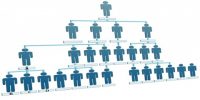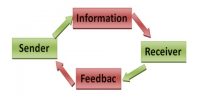Strategic control is a term used to describe the process used by organizations to control the formation and execution of strategic plans; it is a specialized form of management control, and differs from other forms of management control (in particular from operational control) in respects of its need to handle uncertainty and ambiguity at various points in the control process.
Features of an effective strategic control system:
Effective control systems tend to have certain common characteristics. The importance of these characteristics varies with the situation, but in general, effective control systems have the following characteristics:
- Accuracy:
Effective controls generate accurate data and information. Accurate information is essential for effective managerial decisions. Inaccurate controls would divert management efforts and. energies on problems that do not exist or have a low priority and would fail to alert managers to serious problems that do require attention.
- Timeliness:
There are many problems that require immediate attention. If information about such problems does not reach management in a timely manner, then such information may become useless and damage may occur. Accordingly, controls must ensure that information reaches the decision makers when they need it so that a meaningful response can follow.
- Flexibility:
The business and economic environment are highly dynamic in nature. Technological changes occur very fast. A rigid control system would not be suitable for a changing environment. These changes highlight the need for flexibility in planning as well as in control.
Strategic planning must allow for adjustments for unanticipated threats and opportunities. Similarly, managers must make modifications in controlling methods, techniques, and systems as they become necessary. An effective control system is one that can be updated quickly as the need arises.
- Acceptability:
Controls should be such that all people who are affected by it are able to understand them fully and accept them. A control system that is difficult to understand can cause unnecessary mistakes and frustration and may be resented by workers.
Accordingly, employees must agree that such controls are necessary and appropriate and will not have any negative effects on their efforts to achieve their personal as well as organizational goals.
- Integration:
When the controls are consistent with corporate values and culture, they work in harmony with organizational policies and hence are .easier to enforce. These controls become an integrated part of the organizational environment and thus become effective.
The cost of a control system must be balanced against benefits. The system must be economically feasible and reasonable to operate. For example, a high-security system to safeguard nuclear secrets may be justified but the same system to safeguard office supplies in a store would not be economically justified. Accordingly, the benefits received must outweigh the cost of implementing a control system.
- Strategic placement:
Effective controls should be placed and emphasized at such critical and strategic control points where failures cannot be tolerated and here time and money costs of failures are greatest.
- Corrective action:
An effective control system not only checks for and identifies deviation but also is programmed to suggest solutions to correct such a deviation. For example, a computer keeping a record of inventories can be programmed to establish “if-then” guidelines.
- Emphasis on exception:
A good system of control should work on the exception principle so that only important deviations are brought to the attention of management, In other words, management does not have to bother with activities that are running smoothly.














